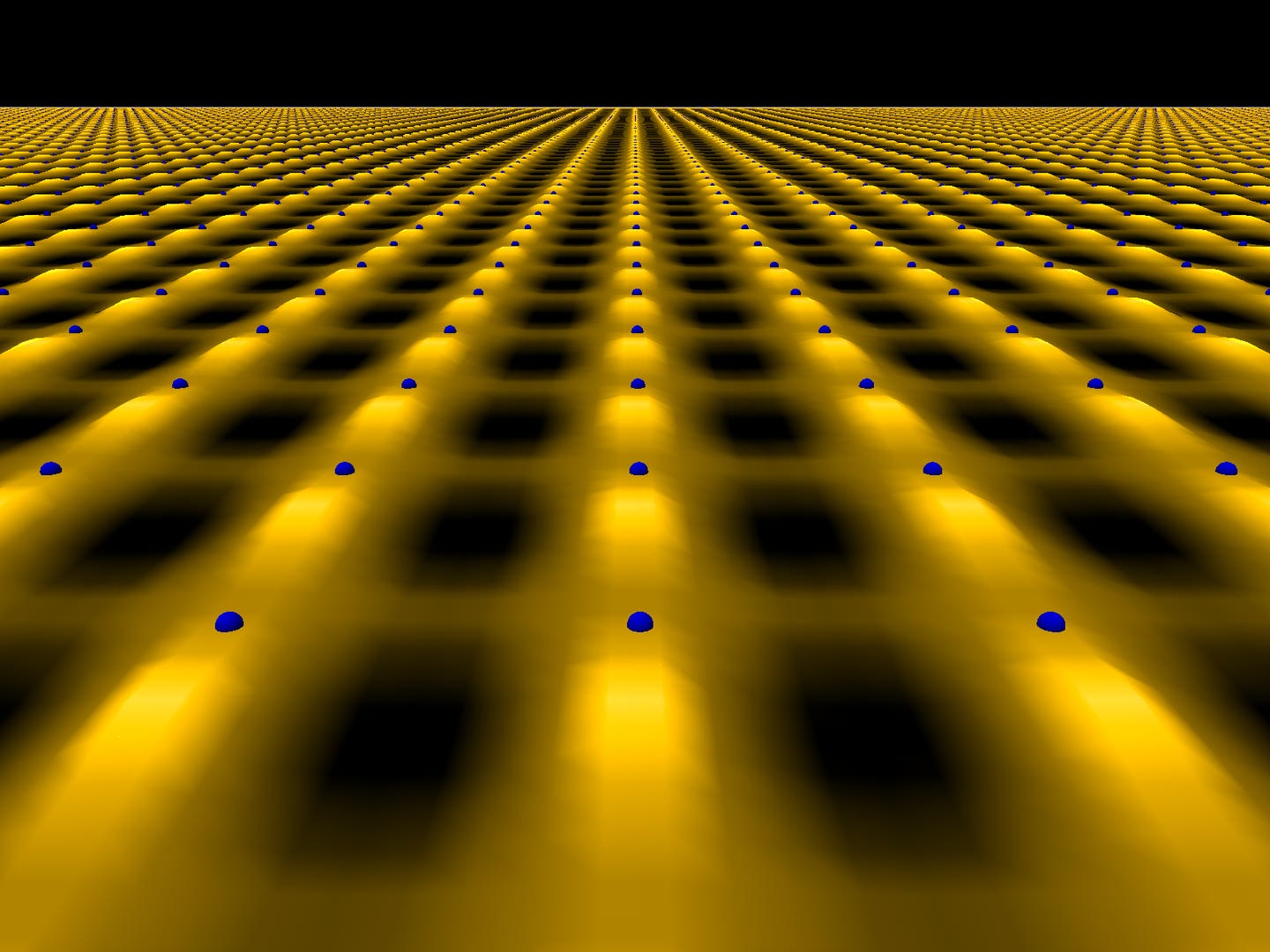Mysteries of a bizarre physical state in quantum physics finally untangled
Researchers have solved key mysteries surrounding the pseudogap, a quantum state linked to superconductivity, with breakthroughs that could revolutionize energy applications.

A significant puzzle in quantum physics, known as the pseudogap, has long intrigued scientists due to its close connection with superconductivity. (CREDIT: CC BY-SA 3.0)
A significant puzzle in quantum physics, known as the pseudogap, has long intrigued scientists due to its close connection with superconductivity. A recent breakthrough, published in Science, sheds light on this mysterious phenomenon.
By applying advanced computational techniques, researchers are closer to unraveling the complexities of pseudogap behavior, a step that may accelerate the search for room-temperature superconductivity—a highly sought-after goal in condensed matter physics. Achieving this would revolutionize industries by enabling lossless power transmission, speeding up MRI machines, and powering levitating trains.
Superconductivity occurs when electricity flows without resistance, a rare event that happens in certain copper-oxide-based materials under extremely cold conditions—temperatures below -140°C. But as these materials heat up, they shift into the pseudogap state, an intermediate phase where the material sometimes behaves like a metal and sometimes like a semiconductor.
The pseudogap is a universal feature in all high-temperature superconducting materials, yet for years, researchers have struggled to understand why or how it manifests and whether it persists as the temperature approaches absolute zero, the coldest possible temperature at -273.15°C.
Related Stories
Understanding how the pseudogap arises and how it ties into superconductivity at absolute zero offers a clearer view of the materials involved, according to Antoine Georges, a co-author of the study and director of the Flatiron Institute’s Center for Computational Quantum Physics.
“It’s like you have a landscape and a lot of fog, and previously you could just see a few valleys and a few peaks,” Georges explains. “Now the fog is dissipating, and we can see more of the full landscape. It’s really quite an exciting time.”
Quantum physicists often rely on computational methods to explore complex states like the pseudogap, but these methods present challenges due to quantum entanglement. In quantum entanglement, particles like electrons become interconnected in ways that prevent them from being analyzed independently.
The behavior of even a few dozen electrons becomes too complex for traditional computational approaches. As Georges points out, “You can’t simulate them exactly on even the most powerful computer you can think of. You have to resort to clever algorithms and simplified models.”
One such model is the Hubbard model, a theoretical framework dating back to the 1960s. In this model, researchers envision a chessboard-like grid where electrons move between adjacent spaces. Electrons spin either upward or downward, and two can only share the same space if their spins are opposite, but at an energy cost. The Hubbard model helps scientists simplify the complexity of electron behavior and apply different computational techniques, each suited to specific situations.
“There is a class of methods which work very well at zero temperature, and there is another class of methods which work very well at finite temperatures,” says Fedor Šimkovic IV, the lead author of the study and a team leader at IQM Quantum Computers. “These two worlds don’t usually speak to each other because, in between them, at very low but finite temperatures, actually lies the computationally hardest regime.” The pseudogap exists precisely in this challenging middle ground.
To crack the pseudogap mystery, the research team turned to an algorithm called diagrammatic Monte Carlo, first introduced in 1998 and refined in 2017 by study co-author Riccardo Rossi. This algorithm contrasts with a well-known approach called quantum Monte Carlo, which focuses on small portions of the system and uses randomness to draw conclusions about the whole.
Instead, diagrammatic Monte Carlo examines interactions across the entire grid at once. “The approach of diagrammatic Monte Carlo is very different,” Rossi explains. “We can simulate, in principle, an infinite number of particles.”
Using this approach, the team gained valuable insights into what happens to pseudogap materials as they approach absolute zero. From prior research, it was known that such materials could either transition into a superconducting state or develop “stripes”—rows of electrons with matching spins, separated by rows of empty spaces.
Whether the material becomes superconducting or develops stripes depends on the number of electrons present. If the material contains exactly as many electrons as grid squares, the electrons form a stable checkerboard pattern, creating an electric insulator—unhelpful for superconductivity. However, changing the number of electrons by adding or removing some can induce superconductivity or the formation of stripes.
Previously, scientists only understood the behavior of these materials at high temperatures, where removing electrons led to the formation of the pseudogap. They didn’t know what happened as the material cooled. As Georges explains, “It was debated if the pseudogap always evolves into the stripe state. Our paper answers this prominent question in the field and closes that window.” The study confirmed that as pseudogap materials cool toward absolute zero, they indeed form stripes.
Interestingly, by tweaking the Hubbard model to allow electrons to move diagonally—similar to how a bishop moves in chess—the pseudogap transitions into a superconducting state as it cools. The researchers also found that as the materials cool, regions of checkerboard electron patterns appear. These patches signal the material’s entry into the pseudogap state, providing another key piece of the puzzle.
These discoveries untangle critical aspects of the Hubbard model and mark a significant advancement in quantum physics. Georges believes this progress represents a collective effort within the scientific community to combine computational methods and break through these long-standing challenges. “We are living through times where finally these problems are getting clarified,” he says.
The findings will also have broader implications, particularly for quantum gas simulation, an experimental field that intersects quantum optics and condensed matter physics. In these experiments, atoms are cooled to ultracold temperatures and trapped in grids resembling the Hubbard model. Thanks to developments in quantum optics, researchers can now cool atoms to temperatures nearing the pseudogap phase, creating a bridge between theory and experiment.
“Our paper has a direct bearing on these ultracold quantum gas simulators,” Georges notes. “These quantum simulators are now on the verge of being able to see this pseudogap phenomenon, so I’m expecting some really interesting developments in the coming year or two.”
Note: Materials provided above by The Brighter Side of News. Content may be edited for style and length.
Like these kind of feel good stories? Get The Brighter Side of News' newsletter.



